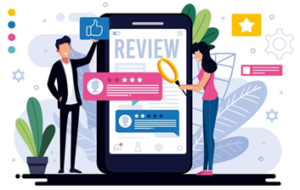Digital Media is undoubtedly an integral part of our lives and is becoming indispensable day by day. We depend on it for the minutest piece of information that we need, be it a simple search for checking the score of the ongoing cricket match or how many calories does a cheese pizza have and even what you are thinking about right now.
Apart from seeking information, we consume larger volumes and a variety of content for entertainment, education, marketing and many other purposes. Content consumption comes naturally to us, but with the internet becoming more accessible in terms of devices and prices, we are becoming content creators as well.
Content creators, now, are not only the people who produce movies, television shows or videos for digital platforms, but almost everyone. A post on Facebook, a tweet or any other piece and format of content on social media platforms but not limited to it, is content created. Blogging, writing reviews on multiple sites, sharing experiences and opinions, seeking active customer support also leads to a multitude of content being created. Don’t you relate to this? You do, right?
Content creation and consumption are unknowingly becoming a habit which we are developing and are very evidently forming a pattern only to become oblivious to our natural behavior.
If you are a brand, who are these people? Simply put, Consumers! What does this consumer behavior mean then? It means accessible information available to us in an unstructured format. How can we put this to our use? The answer is in Online Listening.
Online listening is also known as Online Reputation Monitoring, it is a process of accessing the unstructured data publicly available at various user touch points on digital platforms for our select keywords Once accessed, this information can be segregated into multiple data points, which can then be structured into giving some valuable insights. Sounds Exciting? I am sure, it does but insights can be derived only when you have managed the art of extracting these data points from the clutter.

So, how and where do we start with this?
Irrespective of the nature and model of your business, online listening is a must and these steps, to begin with, should be followed.
- List down all the important stakeholders in your business like consumers, distributors, employees, etc.
- List down the names of top management who are publicly known. For example, Mukesh Ambani if you are Jio. Vijay Shekhar Sharma if you are PayTM, etc.
- List down all your brand names/product names/service names
- List down the brand/product/service categories
- List down your direct competitors
- List down your indirect competitors
- List down the industry
Once you have all this information with you, treat them as keywords to track for online conversations about them. Remember, some keywords are going to be very high volume keywords and some with almost negligible volume so never discard any keyword as insights can come from unexpected places!
Now that you have the list of keywords with you, look for a service provider who can help you with listening to these keywords and then visualize the data ready for interpretations. The pricing of these tools by service providers can vary depending upon the volumes of data.
Once you start fetching this information, figure your top channels by basic segregation into
- Sources – blogs, review sites, publishers, social networks, etc.
- Sentiments – False Positive, True Positive, Neutral, False Negative, True Negative
- Author – Identifying who has published it
- Timing – To factor in recentness & urgency
This is where the listening process ends technically and gathering insights comes into action. Remember, insights will come only when you have enough data points to look at.
What kind of insights can you derive? Some of the standard ones are
- What people think about your brand/product/service and the sentiments associated with it. You can use tools to extract the most used words and then create a word cloud to find your brand adjectives. If these match with what you have set up internally, Great!
- Is there a demand from your consumers? Is that possible? Why not implement it? For example, you are a pharma brand and come across a review which states the efficacy of the product is high, but the smell of the medicine is bad. Can the smell be improved? If yes, why not?
- How is your brand faring against your consumers? What are consumers talking about your competitors? What are the learnings for you to avoid and implement? Great resource.
- Nurturing Business Leads, isn’t this one of the most important objectives for a brand?
However, this looks like a simple process, but it is not. There is tech involved in it to fetch the data and then human intervention is required to read, understand, analyze, and identify the market insights from the clutter.
Kaushal Mahesh Gupta, Manager – Digital Marketing at Zydus Healthcare Limited.
kaushal.m.gupta@zyduscadila.com
